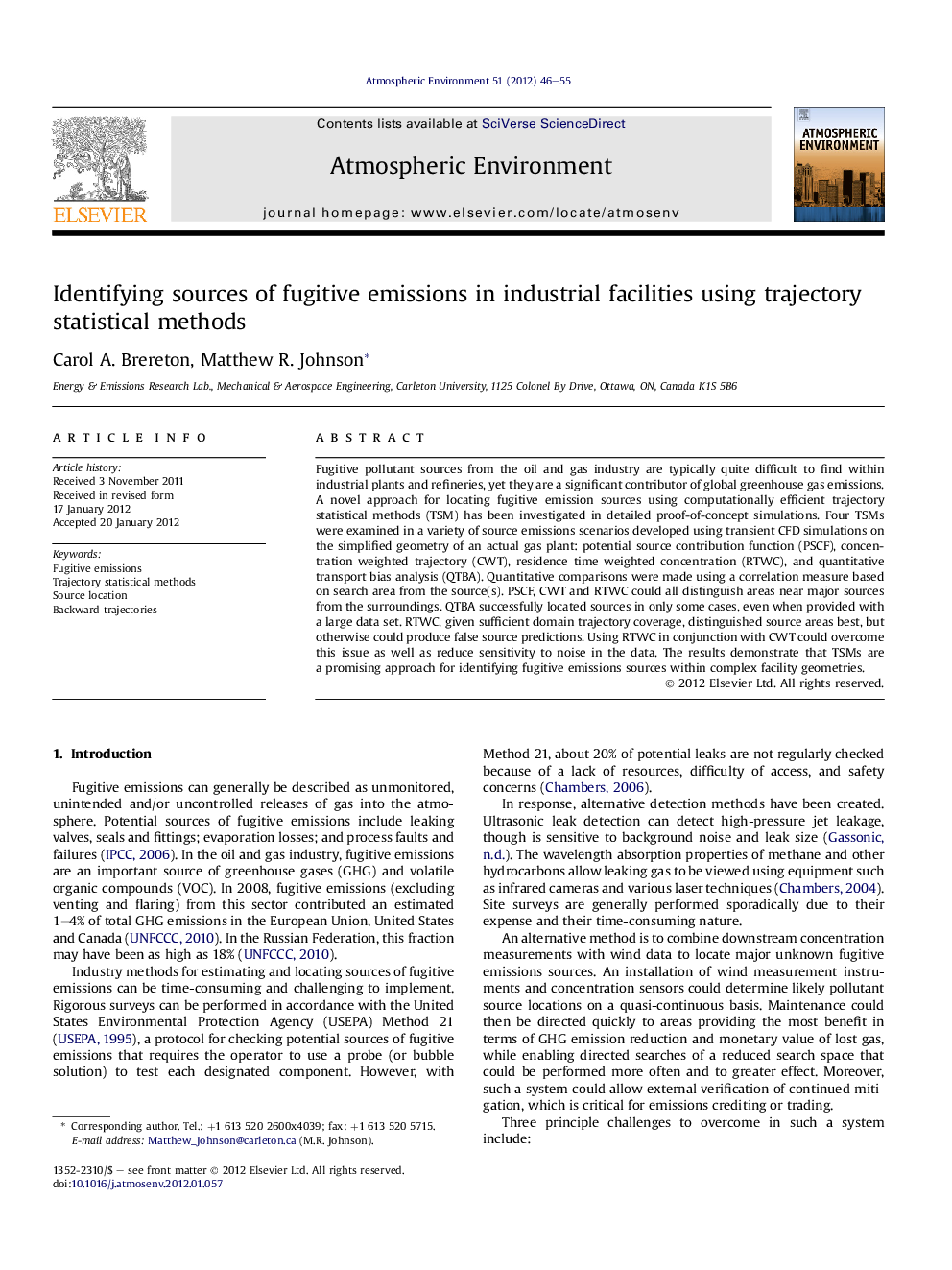| کد مقاله | کد نشریه | سال انتشار | مقاله انگلیسی | نسخه تمام متن |
|---|---|---|---|---|
| 6342501 | 1620420 | 2012 | 10 صفحه PDF | دانلود رایگان |

Fugitive pollutant sources from the oil and gas industry are typically quite difficult to find within industrial plants and refineries, yet they are a significant contributor of global greenhouse gas emissions. A novel approach for locating fugitive emission sources using computationally efficient trajectory statistical methods (TSM) has been investigated in detailed proof-of-concept simulations. Four TSMs were examined in a variety of source emissions scenarios developed using transient CFD simulations on the simplified geometry of an actual gas plant: potential source contribution function (PSCF), concentration weighted trajectory (CWT), residence time weighted concentration (RTWC), and quantitative transport bias analysis (QTBA). Quantitative comparisons were made using a correlation measure based on search area from the source(s). PSCF, CWT and RTWC could all distinguish areas near major sources from the surroundings. QTBA successfully located sources in only some cases, even when provided with a large data set. RTWC, given sufficient domain trajectory coverage, distinguished source areas best, but otherwise could produce false source predictions. Using RTWC in conjunction with CWT could overcome this issue as well as reduce sensitivity to noise in the data. The results demonstrate that TSMs are a promising approach for identifying fugitive emissions sources within complex facility geometries.
⺠Trajectory statistical methods can identify fugitive emissions sources. ⺠Test data from CFD model of wind and gas release over simplified gas plant geometry. ⺠Among several TSMs, RTWC was best, but could give false sources with poor data. ⺠Algorithms could be made relatively insensitive to concentration measurement noise. ⺠RTWC used in conjunction with CWT is a promising approach.
Journal: Atmospheric Environment - Volume 51, May 2012, Pages 46-55